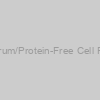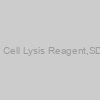Osteoarthritis is essentially the most prevalent joint degenerative illness and has been thought of a serious reason behind extreme joint ache and bodily incapacity within the aged. The chondrocyte is the one cell kind present in articular cartilage and chondrocyte senescence performs a pivotal function within the pathogenesis of osteoarthritis. Apremilast is an oral PDE4 inhibitor and has been used for the remedy of sufferers with energetic psoriatic arthritis. Within the current examine, the organic operate of apremilast was examined in an interleukin (IL)‑17‑handled chondrocyte mannequin. Expression ranges of goal genes and proteins had been measured utilizing reverse transcription‑quantitative PCR, ELISA, and western blotting, respectively.
ROS ranges in chondrocytes had been examined utilizing the fluorescent dye DCFH‑DA. Mobile senescence was decided utilizing senescence-associated-β-galactosidase staining. The profile of cell cycle phases was analyzed through move cytometry. It was revealed that remedy with apremilast lowered the expression of IL‑1β, MCP‑1, and the manufacturing of ROS. SA‑β‑gal staining outcomes indicated that the presence of apremilast suppressed IL‑17‑induced mobile senescence.
Moreover, apremilast prevented IL‑17‑induced G0/G1 part cell cycle arrest. As well as, it was demonstrated that apremilast suppressed IL‑17‑induced expression of p21 and PAI‑1. Notably, the silencing of sirtuin 1 (SIRT1) abolished the protecting impact of apremilast in opposition to IL‑17‑induced mobile senescence, suggesting that the motion of apremilast in chondrocytes depends on SIRT1. In conclusion, the current outcomes revealed that apremilast exerted a helpful impact, thereby defending chondrocytes from senescence induced by IL‑17.
Inhibition of chondrocyte apoptosis in a rat mannequin of osteoarthritis by exosomes derived from miR‑140‑5p‑overexpressing human dental pulp stem cells
Osteoarthritis (OA) is a typical joint dysfunction, and the restoration of the impaired cartilage stays a essential concern for researchers and clinicians. MicroRNAs (miRNAs or miRs) play essential roles within the pathogenesis of OA. The current examine examined the therapeutic efficacy of exosomal‑miR‑140‑5p for the remedy of OA utilizing dental pulp stem cells (DPSCs). The findings indicated that the exosomal burden of miR‑140‑5p was considerably elevated following the transfection of DPSCs with miR‑140‑5p mimic.

The administration of DPSC‑derived exosomes promoted chondrocyte‑associated mRNA expression, together with aggrecan, Col2α1 and Sox9, in interleukin (IL)‑1β‑handled human chondrocytes. This impact was considerably enhanced by miR‑140‑5p‑enriched exosomes. The outcomes additional revealed that miR‑140‑5p‑enriched exosomes induced a extra vital discount in IL‑1β‑induced chondrocyte apoptosis than the DPSC‑derived exosomes.
Mechanistically, it was discovered that miR‑140‑enriched DPSC‑derived exosomes exerted anti‑apoptotic results, most likely by regulating the expression ranges of apoptosis‑associated proteins. Moreover, a number of administrations of miR‑140‑5p‑enriched exosomes considerably improved knee joint circumstances in a rat mannequin of OA. Collectively, the info of the current examine recommend that exosomes derived from genetically modified DPSCs could show to be a possible technique for the remedy of OA.
Anionic and Zwitterionic Residues Modulate Stiffness of Photograph-Cross-Linked Hydrogels and Mobile Conduct of Encapsulated Chondrocytes
Photograph-cross-linked poly(ethylene glycol) dimethacrylate (PEGDMA) hydrogels have been broadly utilized for cartilage tissue engineering. Nevertheless, methods for enhancing their stiffness have been predominantly restricted to growing the diploma of photo-cross-linking or weight fraction of the polymer. On this examine, we examined the speculation that covalent incorporation of anionic sulfonate or zwitterionic sulfobetaine residues into photo-cross-linked PEGDMA hydrogels may improve their mechanical properties with out altering total polymer content material or swelling conduct.
As well as, we investigated whether or not and the way covalent incorporation of those chemical residues would have an effect on cartilage extracellular matrix secretion by encapsulated chondrocytes. With the incorporation of 5-10% anionic or zwitterionic residues, the compressive moduli of PEGDMA hydrogels elevated and the stress leisure expedited whereas the swelling conduct and total polymer fraction had been saved the identical.
The incorporation of anionic residues exerted a extra profound incorporation content-dependent affect on compressive moduli than zwitterionic residues. Larger-content incorporation of the anionic residue (10% vs 5%) additionally lowered the metabolic exercise and sort II collagen secretion by encapsulated murine chondrocytes and restricted the pericellular diffusion of secreted proteoglycans inside the 3D hydrogel. Though encapsulated human chondrocytes exhibited completely different sensitivity to serum stage in tradition than murine chondrocytes, the overall development of the affect of covalent incorporation of the chemical residues on their ECM secretion was the identical.
General, covalent incorporation of anionic and zwitterionic residues at an acceptable content material presents a viable different to growing the diploma of photo-cross-linking for modulating the stiffness of PEGDMA hydrogels and the metabolism and phenotypical matrix secretion by encapsulated chondrocytes. It underscores the importance of noncovalent interactions imposed by charged residues in modulating biomechanical and mobile properties in tissue engineering scaffold designs.
Adenosine A2A receptor signaling promotes FoxO related autophagy in chondrocytes
Autophagy, a homeostatic pathway upregulated throughout mobile stress, is decreased in osteoarthritic chondrocytes and this discount in autophagy is assumed to contribute to the event and development of osteoarthritis (OA). The adenosine A2A receptor (A2AR) is a potent anti-inflammatory receptor and deficiency of this receptor results in the event of OA in mice. Furthermore, remedy utilizing liposomally conjugated adenosine or a particular A2AR agonist improved joint scores considerably in each rats with post-traumatic OA (PTOA) and mice subjected to a excessive fats weight loss plan weight problems induced OA.
Importantly, A2AR ligation is helpful for mitochondrial well being and metabolism in vitro in major and the TC28a2 human cell line. A further set of metabolic, stress-responsive, and homeostatic mediators embody the Forkhead field O transcription elements (FoxOs). Information has proven that mouse FoxO knockouts develop early OA with lowered cartilage autophagy, indicating that FoxO-induced homeostasis is vital for articular cartilage. Given the obvious similarities between A2AR and FoxO signaling, we examined the speculation that A2AR stimulation improves cartilage operate via activation of the FoxO proteins resulting in elevated autophagy in chondrocytes.
We analyzed the signaling pathway within the human TC28a2 cell line and corroborated these findings in vivo in a metabolically related obesity-induced OA mouse mannequin. We discovered that A2AR stimulation will increase activation and nuclear localization of FoxO1 and FoxO3, promotes a rise in autophagic flux, improves metabolic operate in chondrocytes, and reduces markers of apoptosis in vitro and lowered apoptosis by TUNEL assay in vivo.
 EZStem™ Stem Cell Freezing Medium |
|
M050 |
ALSTEM |
50 ml |
EUR 136.02 |
) Serum-free Cell Freezing Medium (Ready-to-use) |
|
EN-CELL-016 |
EnoGene |
100ml |
EUR 80 |
) Cell Culture Freezing Medium (NON-FBS) |
|
cAP-22B |
Angio Proteomie |
50ml |
EUR 128.7 |
 SuperKine™ Serum/Protein-Free Cell Freezing Medium |
|
BMU108-EN-100mL |
Abbkine |
100 mL |
EUR 109 |
|
Description: SuperKine™ Serum/Protein-Free Cell Freezing Medium is a kind of non programmed, ready-to-use cell freezing medium with clear formula, serum-free and protein-free, which is applicable to most mammalian cells. It can eliminate the potential pathogen contamination or immune reaction risk of serum or protein, so it is safer to use, no need for programmed cooling, and can keep the recovery survival rate of various cells above 95%. |
 SuperKine™ Serum/Protein-Free Cell Freezing Medium |
|
BMU108-EN-each |
Abbkine |
each |
Ask for price |
 SuperKine™ Serum/Protein-Free Cell Freezing Medium |
|
BMU108-EN-Null |
Abbkine |
Null |
Ask for price |
) Freezing Medium (Serum-free & animal origin-free) |
|
PB180438-100mL |
Elabscience Biotech |
100 mL |
EUR 118 |
|
Description: Supplements & Reagents |
) Freezing Medium (Serum-free & animal origin-free) |
|
PB180438-50mL |
Elabscience Biotech |
50 mL |
EUR 65 |
|
Description: Supplements & Reagents |
) Freezing Medium (Serum-free & animal origin-free) |
|
PB180438 |
Elabscience Biotech |
100mL |
EUR 118 |
|
|
|
Description: Others |
 Cell Freezing Media I |
|
CA301-005 |
GenDepot |
50ml |
EUR 246 |
 Cell Freezing Media II |
|
CA302-005 |
GenDepot |
50ml |
EUR 273.6 |
 Cell Freezing Media III |
|
CA303-005 |
GenDepot |
50ml |
EUR 290.4 |
 Ceracryo Xeno-Free Cell Freezing Media |
|
C0667-005 |
GenDepot |
50ml |
EUR 262.8 |
 Ceracryo Xeno-Free Cell Freezing Media |
|
C0667-010 |
GenDepot |
100ml |
EUR 327.6 |
) CytoSelect Cell Proliferation Assay Reagent
(Fluorometric) |
|
CBA-250 |
Cell Biolabs |
10 mL |
EUR 490.8 |
|
Description: Cell Biolabs? CytoSelect Cell Proliferation Assay Reagent (Fluorometric) provides a fluorometric format for measuring and monitoring cell proliferation. Cells can be plated and then treated with compounds or agents that affect proliferation. Cells are then incubated with the proliferation reagent. Upon entering metabolically active live cells, the non-fluorescent proliferation reagent is converted into a bright red fluorescent form. An increase in cell proliferation is accompanied by increased fluorescent signal, while a decrease in cell proliferation (and signal) can indicate the toxic effects of compounds or suboptimal culture conditions. The assay principles are basic and can be applied to most eukaryotic cell lines, including adherent and non-adherent cells and certain tissues. This cell proliferation reagent can be used to detect proliferation in bacteria, yeast, fungi, protozoa as well as cultured mammalian and piscine cells. The kit contains sufficient reagents for the evaluation of 960 assays in ten 96-well plates or 192 assays in eight 24-well plates. |
) CytoSelect™ Cell Proliferation Assay Reagent (Colorimetric) |
|
CBA-253 |
Cell Biolabs |
10 mL |
EUR 320 |
 PERMANENT AQUEOUS MOUNTING MEDIUM Reagent |
|
GWB-Q00293 |
GenWay Biotech |
30 ml |
Ask for price |
 PERMANENT AQUEOUS MOUNTING MEDIUM Reagent |
|
GWB-Q00294 |
GenWay Biotech |
100 ml |
Ask for price |
 PERMANENT AQUEOUS MOUNTING MEDIUM Reagent |
|
GWB-Q00295 |
GenWay Biotech |
250 ml |
Ask for price |
) 5X Bacterial Protein Extraction Reagent (Tris) |
|
AKR-180 |
Cell Biolabs |
50mL |
EUR 331.2 |
|
Description: The Cell Biolabs Bacterial Protein Extraction Reagents contain a gentle, nonionic detergent formulation which quickly extracts functional, recombinant protein from E. coli without mechanical disruption. |
 Freezing Media Pair™, 50 ml |
|
0406 |
AthenaES |
50 ml |
EUR 44.9 |
|
|
 Freezing Media Pair™, 50 ml |
|
406 |
AthenaES |
50 ml |
EUR 108 |
) 5X Bacterial Protein Extraction Reagent (Phosphate) |
|
AKR-181 |
Cell Biolabs |
50mL |
EUR 331.2 |
|
Description: The Cell Biolabs Bacterial Protein Extraction Reagents contain a gentle, nonionic detergent formulation which quickly extracts functional, recombinant protein from E. coli without mechanical disruption. |
 PhosphoBlocker™ Blocking Reagent |
|
AKR-103 |
Cell Biolabs |
1L |
EUR 265 |
 PhosphoBlocker™ Blocking Reagent |
|
AKR-104 |
Cell Biolabs |
4L |
EUR 630 |
 12 Vial Cell Freezing Container |
|
Q5085 |
ABM |
1 Box |
EUR 195 |
 30 Vial Cell Freezing Container |
|
Q5086 |
ABM |
1 Box |
EUR 365 |
 QUANTUM R-PE MESF MEDIUM LEVEL Reagent |
|
GWB-Q00324 |
GenWay Biotech |
20 TESTS |
Ask for price |
 QUANTUM R-PE MESF MEDIUM LEVEL Reagent |
|
GWB-Q00325 |
GenWay Biotech |
100 TESTS |
Ask for price |
 Freezing Griddle/Elevated Freezing Block Set, per set |
|
IW-P119 |
IHC World |
- |
EUR 385 |
 MIDASplus 10mL Single Reagent 100mL |
|
M-MDSR-106 |
MiTeGen |
100 ml ml |
EUR 183 |
|
Description: MIDASplus 10mL Single Reagent 100mL |
 Freezing Box Accessories, Ice Free Freezing Block, 0.5℃~4℃, 1/pk, 1/cs |
|
200902 |
NEST Biotechnology |
1 pcs/cs |
EUR 42.9 |
|
Description: Freezing Box Accessories, Ice Free Freezing Block, 0.5℃~4℃, 1/pk, 1/cs |
 Freezing Box Accessories, Ice Free Freezing Block, -18℃~4℃, 1/pk, 1/cs |
|
200903 |
NEST Biotechnology |
1 pcs/cs |
EUR 42.9 |
|
Description: Freezing Box Accessories, Ice Free Freezing Block, -18℃~4℃, 1/pk, 1/cs |
 OOSA09602-100ML - PERMANENT AQUEOUS MOUNTING MEDIUM Accessory Reagent |
|
OOSA09602-100ML |
Aviva Systems Biology |
100ml |
EUR 389 |
|
|
 OOSA09603-250ML - PERMANENT AQUEOUS MOUNTING MEDIUM Accessory Reagent |
|
OOSA09603-250ML |
Aviva Systems Biology |
250ml |
EUR 769 |
|
|
 FreeZol Reagent |
|
R711-01 |
Vazyme |
100 ml |
EUR 71.2 |
 FreeZol Reagent |
|
R711-02 |
Vazyme |
200 ml |
EUR 127.2 |
 OOSA11236-20T - QUANTUM™ R-PE MESF MEDIUM LEVEL Accessory Reagent |
|
OOSA11236-20T |
Aviva Systems Biology |
20Tests |
EUR 929 |
|
|
 OOSA11237-100T - QUANTUM™ R-PE MESF MEDIUM LEVEL Accessory Reagent |
|
OOSA11237-100T |
Aviva Systems Biology |
100Tests |
EUR 2269 |
|
|
 Metal Mirror Freezing Kit |
|
M-CEM-37455 |
MiTeGen |
1 UNIT |
EUR 3685 |
|
Description: Metal Mirror Freezing Kit |
 Freezing Boxes, Plastic, Autoclavable |
|
CG295-1X5NO |
EWC Diagnostics |
1 unit |
EUR 45.98 |
|
Description: Freezing Boxes, Plastic, Autoclavable |
 Freezing Boxes, Plastic, Autoclavable |
|
CG296-1X5NO |
EWC Diagnostics |
1 unit |
EUR 51.32 |
|
Description: Freezing Boxes, Plastic, Autoclavable |
 Over-Chuck Freezing Block, each |
|
IW-P141 |
IHC World |
- |
EUR 35 |
 COOLCELL® LX-4 PACK, 4 COLOURS, CELL FREEZING CONTAINER, FOR 12 X 1ML OR 2ML CRYOGENIC VIALS |
|
432138 |
CORNING |
1/pk |
EUR 714 |
|
Description: BioCision; BioCision CoolCell |
 Freezing Boxes, Carboard 49-Place |
|
CG287-1X10NO |
EWC Diagnostics |
1 unit |
EUR 44.76 |
|
Description: Freezing Boxes, Carboard 49-Place |
 Freezing Boxes, Carboard 16-Place |
|
CG288-1X10NO |
EWC Diagnostics |
1 unit |
EUR 44.76 |
|
Description: Freezing Boxes, Carboard 16-Place |
 Freezing Boxes, Carboard 64-Place |
|
CG289-1X10NO |
EWC Diagnostics |
1 unit |
EUR 40.77 |
|
Description: Freezing Boxes, Carboard 64-Place |
 Freezing Boxes, Carboard 81-Place |
|
CG290-1X10NO |
EWC Diagnostics |
1 unit |
EUR 40.77 |
|
Description: Freezing Boxes, Carboard 81-Place |
 Freezing Boxes, Carboard 100-Place |
|
CG291-1X10NO |
EWC Diagnostics |
1 unit |
EUR 40.77 |
|
Description: Freezing Boxes, Carboard 100-Place |
 Xpro IP Cell Lysis Reagent,SDS Free |
|
X3100-010 |
GenDepot |
100ml |
EUR 208.8 |
 Xpro IP Cell Lysis Reagent,SDS Free |
|
X3100-050 |
GenDepot |
500ml |
EUR 380.4 |
 Nest BioFactory 15 Chamber, Resistance to freezing, 2 Wide Plug Seal Caps, TC, S |
|
771503 |
NEST Biotechnology |
2 pcs/cs |
EUR 143.88 |
|
Description: Nest BioFactory 15 Chamber, Resistance to freezing, 2 Wide Plug Seal Caps, TC, Sterile, 1/pk, 6/cs (with 12 Sterile Vent Caps Included Separately) |
 COOLCELL®SV2 FREEZING CONTAINER, FOR 12 X 2ML SERUM VIALS |
|
432010 |
CORNING |
1/pk |
EUR 417.6 |
|
Description: BioCision; BioCision CoolCell |
 Ice Free Cool Box for 30 Tubes, 2mL, with Freezing Block, 1/pk, 1/cs |
|
200103 |
NEST Biotechnology |
1 pcs/cs |
EUR 267.96 |
|
Description: Ice Free Cool Box for 30 Tubes, 2mL, with Freezing Block, 1/pk, 1/cs |
 Freezing Box Accessories, 30 Tubes, 2mL Tube Holder Block, 1/pk, 1/cs |
|
200904 |
NEST Biotechnology |
1 pcs/cs |
EUR 96.58 |
|
Description: Freezing Box Accessories, 30 Tubes, 2mL Tube Holder Block, 1/pk, 1/cs |
 Freezing Box Accessories, 30 Tubes, 5mL Tube Holder Block, 1/pk, 1/cs |
|
200906 |
NEST Biotechnology |
1 pcs/cs |
EUR 157.63 |
|
Description: Freezing Box Accessories, 30 Tubes, 5mL Tube Holder Block, 1/pk, 1/cs |
) ExoPure? Reagent (Overall Exosome Isolation, cell media) |
|
M1002-25 |
Biovision |
each |
EUR 992.4 |
) ExoPure? Reagent (Overall Exosome Isolation, cell media) |
|
M1002-50 |
Biovision |
each |
EUR 1083.6 |
) VEX Exosome Isolation Reagent (from cell culture media) |
|
R601 |
Vazyme |
50 ml |
EUR 706.8 |
 Freezing Box Accessories, Ice Free Cool Box, 1/pk, 1/cs |
|
200901 |
NEST Biotechnology |
1 pcs/cs |
EUR 129.03 |
|
Description: Freezing Box Accessories, Ice Free Cool Box, 1/pk, 1/cs |
) DIRECTPCR LYSIS REAGENT (CELL) |
|
302-C |
Viagen |
100 ml |
EUR 159 |
) DIRECTPCR LYSIS REAGENT (CELL) |
|
301-C |
Viagen |
50 ml |
EUR 95 |
) T-Pro Total Exosome Isolation reagent (from cell culture media) |
|
JO66-V001M |
T-Pro Biotechnology |
500ml/BT |
EUR 800 |
) T-Pro Total Exosome Isolation reagent (from cell culture media) |
|
JO66-V001S |
T-Pro Biotechnology |
100ml/BT |
EUR 200 |
A2AR ligation moreover enhances in vivo activation of FoxO1 and FoxO3 with proof of enhanced autophagic flux upon injection of the liposome-associated A2AR agonist in a mouse obesity-induced OA mannequin. These findings provide additional proof that A2AR could also be a superb goal for selling chondrocyte and cartilage homeostasis.


Leave a Comment